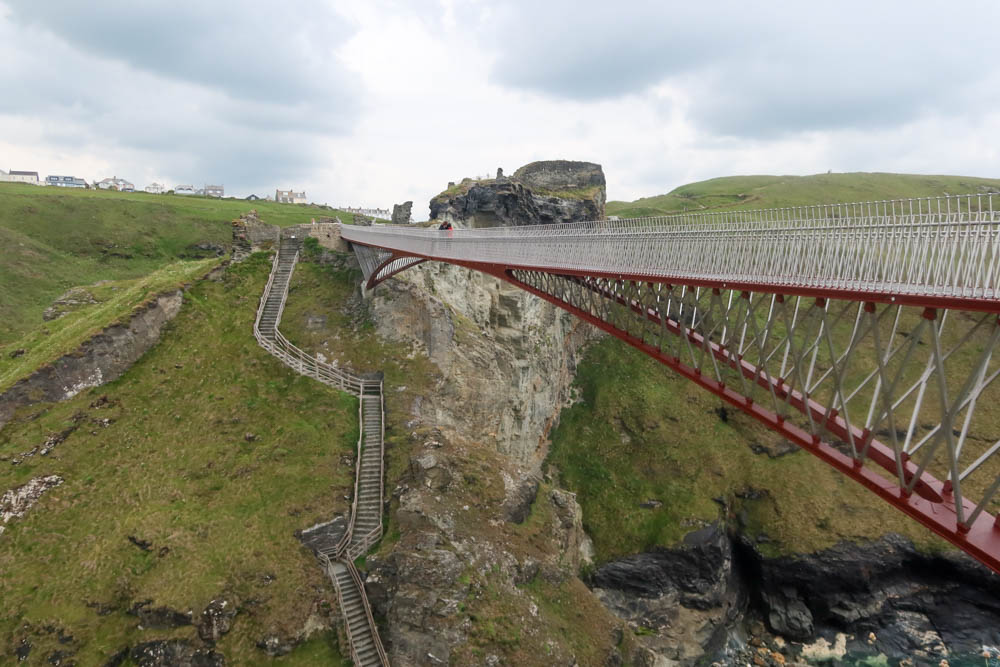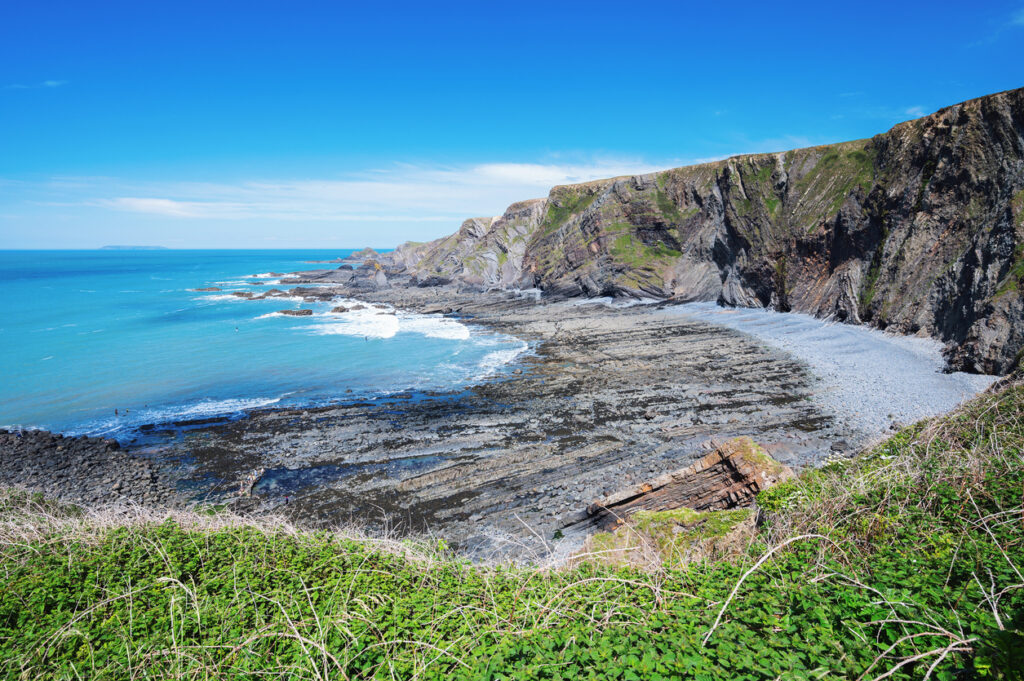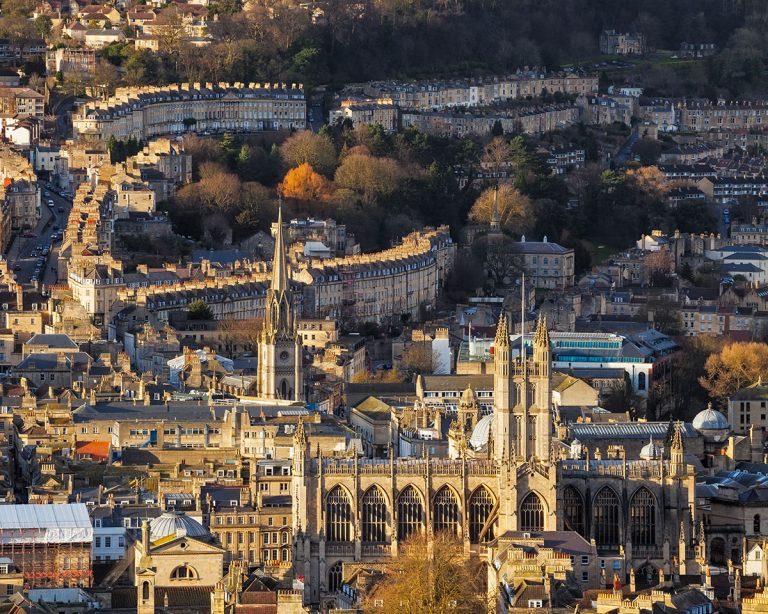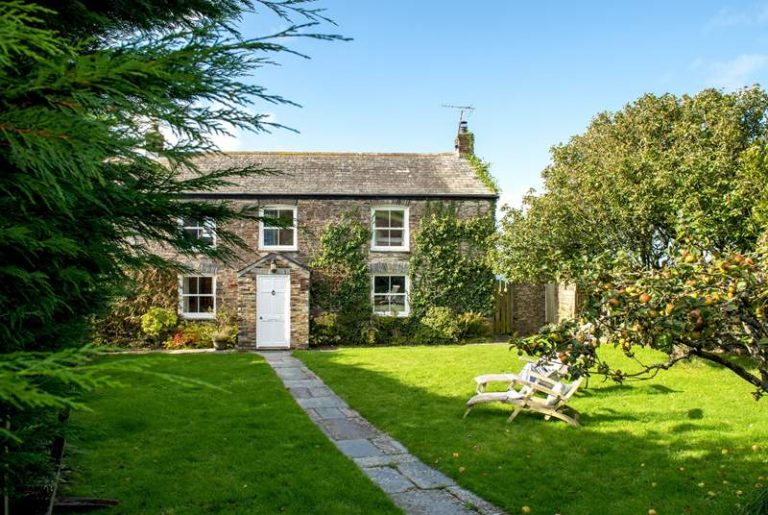Magical places to visit in Cornwall: Waterfalls and Legends!
Are you looking for magical places to visit in Cornwall? Here’s our list of the best!
Whenever I step over the River Tamar, I feel a bit different.
I come from a long line of Cornish ancestors, and I’ve had stories about the magical kingdom in the South West drilled into me from a young age.
If it’s your first time in Cornwall, you might not notice the spirituality and mythical feeling to it at first. But stay a little while and visit some of these magical places in Cornwall, and you’ll definitely see what I’m talking about.
From the dramatic coastline of North Cornwall, to the tip of the peninsula at Land’s End, to the smuggling havens on the sourthern Cornish coast, to the vast Bodmin Moor that sits in the middle, there are so many magical places to visit in Cornwall.
Let’s take a look at some of the best!
Magical places to visit in Cornwall
Tintagel Castle

Tintagel Castle (and the surrounding town) is probably the first place that jumps to most local’s minds when they’re asked about magic Cornish places.
An ancient castle sitting on its own island, this historic site is connected to the mainland by a suspension bridge. Below sits a beach and Merlin’s Cave, which is allegedly where the legendary wizard Merlin lived.
Tintagel Castle, on the other hand, is apparently the birthplace of King Arthur.

While most historians don’t believe that these rumours were true – in fact, they were created by Geoffery of Monmouth in the 12th century – the place certainly does have a historical charm to it.
You can take in views of Tintagel Island from the beach down below or the coastal path, or visit the castle itself and walk around the ruins.
St Nectan’s Glen

One of my favourite hidden gems in Cornwall, St Nectan’s Glen pretty much epitomizes magic.
Most famous for its beautiful waterfall, St Nectan’s Kieve (which is definitely one of the best waterfalls in Cornwall), St Nectan’s Glen is said to be a place where piskies play and legends meet.
It has been a pilgrimage site since the 5th century and is still somewhere that many Tintagel residents hold dear.

It’s the ideal place for a woodland walk and is certainly a hidden gem in Cornwall.
It’s also worth visiting the enigmatic Rocky Valley, which isn’t too far away (it’s on the coastal walk between Tintagel and Boscastle). They’re both waterfalls of the River Trevillet.
Land’s End (and alternatives)

Sitting right at the end of the country (as the name suggests) Land’s End is a place that has been attached to myths and legends for centuries.
A rocky peninsula that separates the Atlantic Ocean and the English Channel, Land’s End is the terminus of two dramatic coastlines.
It’s a famous place for Cornish folklore too. As legend has it, west of Land’s End sits the “Lost Land of Lyonesse”. This was a part of King Arthur’s kingdom, connecting the tip of Cornwall with the Isles of Scilly which sit some 20 miles from shore.
According to this legend, the Isles of Scilly are the mountaintops of this mythical land, which has been flooded by water!
Fishermen have even said that they can hear church bells as they sail around the waters past Land’s End.
Whether you believe in the Lost Land of Lyonesse or not, there’s no denying that Land’s End has a very spiritual feel to it.
However, there are some quieter alternatives if you’d like the “end of the world” experience without all the tourists. I recommend visiting:

- Cape Cornwall: This headland used to be thought of as the furthest west point in Cornwall before it was proven to be Land’s End. It’s part of the Cornish Mining World Heritage Site and the remains of a mine sit on top of a hill at the peninsula.
- Lizard Point: This is the furthest south point in mainland UK. Sitting at the end of the Lizard Peninsula, here you’ll find a marker, a cafe and a shop. While it’s fairly popular, partially due to its proximity to Kynance Cove, it’s much quieter than Land’s End!
Holywell Bay

One of my favourite beaches near Newquay, Holywell Bay is a magical cove with glittering golden sands.
It’s where parts of Poldark and Game of Thrones were filmed, but it also has an incredible magical hidden gem.
One of the most impressive secret spots in Cornwall, Cuthbert Cave (also sometimes called Holywell Cave) tucked away at the end of the beach.
This really is a Cornish hidden gem. It should only be explored on an outgoing tide, as it’s only accessible on low tide and the steps can be slippery.
I just want to stress again, as I’ve been raised to be very conscious of sea safety – only explore it when the tide is going out, and make sure you’re fully aware about how long you have before the tide starts going back in.
You’ll find the cave under the cliffs at Kelsey Head at low tide.
Take some steps up toward the hole in the cave and walk into the incredible cavern where you can see bright colours of red and blue, which were created thanks to mineral rich water in the cave.
Take a torch, as it can be dark, but I guarantee that you’ll be amazed!
It’s said to have healing powers (probably due to the amount of natural minerals!), which definitely makes it one of the most magical places in Cornwall!
Lantic Bay

While Lantic Bay isn’t quite as connected to folklore as other destinations on this list, it’s a stunning beach on the South West Coast Path that’s completely tucked away, so much so that it feels very magical!
When you get there, there are breathtaking views across the white sand, and the bright blue water looks like you could be in the Mediterranean.
Because it’s so tucked away, it’s one of the quietest beaches in Cornwall, even in the summer.
To reach Lantic Bay, you’ll need to park nearby and climb down the steep steps to reach the sands.
It’s between Lansallos and Polruan, and you can reach it by plugging the postcode PL23 1NP into your sat nav.
Pendennis Castle

While Pendennis Castle doesn’t have the same connection with myth and folklore as other entries on this list, it still deserves a place on this list due to how it’s haunted!
Yes, that’s right… there’s a haunted castle in Falmouth!
Pendennis Castle was built by King Henry VIII to protect the River Fal and Carrick Roads from Spanish and French invaders.
It was used during the Civil War, when around 1,000 people were trapped inside the castle as part of a siege. It’s thought that they were trapped inside for 155 days – and by this time, over 100 people had died.
Of course, this story leads the way to many tales of ghosts and gouls in the Falmouth Castle! Visiting tourists have claimed that they can hear ghostly sounds as they explore.
I personally have never heard any, but there are plenty of claims!
See all of the other things to do in Falmouth here.
Hartland Heritage Coast

The Hartland Heritage Coast is technically in Devon, but the epic cliffs span into East Cornwall as well.
In fact, the Hartland Quay to Bude hike is one of the most dramatic (and difficult) parts of the South West Coast Path!
It’s a rollercoaster series of cliffs and sandy beaches, with near-vertical pathways rising and descending over each incline.
It’s on this list of magical places to visit in Cornwall because you’ll hardly see another soul as you hike – and having this terrain completely to yourself is something truly special.
Don’t miss the Hawker’s Hut, which is where the Vicar of Morwenstow used to write – and where “Trelawney”, the unofficial Cornish national anthem was written!
If you hike all the way to Hartland Quay, don’t miss Speke’s Mill Mouth, which is one of my favourite waterfalls in Devon.
St Agnes Heritage Coast

The St Agnes Heritage Coast is a glorious stretch of coastline between Perranporth to St Agnes.
The rocky coastline is a mining heritage site, and it’s one of the most beautiful parts of the South West Coast Path.
Take a look at the iconic Wheal Coates mine which contrasts with the bright blue of the sea and is a mesmerizing photo opportunity.
The South West Coast Path walk that connects the two Cornish towns of Perranporth and St Agnes is a fairly short walk and the stunning views make it one that’s well worth doing.
Bodmin Moor

The enigmatic Bodmin Moor is certainly home to some sort of magic… be that good or bad!
This stretch of moorland sits in the middle of Cornwall and is a big reason why West Cornwall was so set apart from the rest of the South West throughout history.
If you drive around Bodmin Moor, you’ll see natural features like beautiful waterfalls, enigmatic stone circles like Trippet Stone Circle and Stannon Stone Circle and Cornwall’s highest peak (Brown Willy) where you can take in a mesmerising vista of Bodmin and much of Cornwall.

If you want to learn more about the fascinating history of smuggling in the area, it’s worth visiting the smuggling museum at Jamaica Inn, and dining at the fascinating restaurant which still looks like an 18th-century tavern.
You can stay the night if you’d like, and there’s a gift shop on site to get some souvenirs.
Although it’s again spooky, rather than magical, Bodmin Jail is also worth a visit.
It’s been done up in recent years and nowadays it’s a comprehensive education into what the Victorian penal system was like, complete with sensory displays and 3D films.
Polperro

Polperro isn’t as connected to Cornish folklore as other destinations on this list, but it’s definitely one of the most interesting places when it comes to smuggling!
This definitely isn’t folklore – thanks to its isolation and sparse population (this was long before tourism touched its shores!) Cornwall had a long connection with smuggling, with many of the coastal towns being hotspots.
One of them was Polperro, a small village sitting on the South Coast.
You’ll understand why it was such a haven for smugglers when you visit – there are secret coves and a charming harbour, which is famous for being surrounded by picturesque fisherman’s cottages.
If you want to learn more about the rich history of smuggling in Polperro, there is a smuggling museum in Polperro which describes its connection with the illicit movement.
St Ives

Cornwall is full of charming fishing villages, but St Ives is perhaps its most famous (although it actually got town status back in the 16th century).
Famous for its narrow streets and gorgeous harbour, it is postcard-perfect, and on a sunny day, the beaches (especially around Carbis Bay) feel virtually tropical.
But like many places in Cornwall, folklore is everywhere. You can learn about it on a Shanty Baba walking tour – he takes groups of tourists around St Ives and details the mystical stories of West Cornwall – and there are a lot!

Learn about the Mermaid of Zennor which is located just to the west of St Ives, or hear about St Agnes and the legend of the Giant Bolster. Not all of his folklore stories are related to St Ives, but it’s a great way to hear more about this part of Cornish culture.
St Ives is also a great place to spot seals, has incredible beaches (visit them in the winter for no crowds!) and is a very arty spot – I think it’s pretty magical in itself!

If you’re into the weird and wonderful, definitely add some of these attractions to your Cornwall bucket list. With plenty of ancient history, folklore, haunted attractions and scenes that you won’t believe are real, there’s so much magic in this part of the country.
Not every tourist notices the different layers to Cornwall on their first visit, but stay a little while, experience some different aspects to the region, and I guarantee you’ll see how special a place it truly is.






